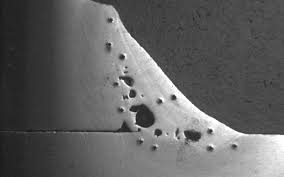Understanding Porosity in Welding: Discovering Reasons, Impacts, and Prevention Strategies
Porosity in welding is a persistent challenge that can dramatically influence the quality and stability of welds. As professionals in the welding sector are cognizant, recognizing the reasons, impacts, and avoidance strategies related to porosity is critical for attaining durable and trusted welds. By diving into the root creates of porosity, analyzing its detrimental results on weld quality, and checking out reliable prevention strategies, welders can boost their expertise and abilities to produce top quality welds consistently. The intricate interplay of elements adding to porosity calls for a comprehensive understanding and an aggressive technique to ensure successful welding outcomes.
Common Reasons of Porosity
Contamination, in the form of dust, oil, or corrosion on the welding surface area, produces gas pockets when heated up, leading to porosity in the weld. Inappropriate securing happens when the protecting gas, generally made use of in processes like MIG and TIG welding, is incapable to fully safeguard the liquified weld pool from responding with the surrounding air, resulting in gas entrapment and succeeding porosity. Additionally, insufficient gas protection, commonly due to wrong flow rates or nozzle positioning, can leave parts of the weld unguarded, allowing porosity to form.
Results on Weld High Quality
The presence of porosity in a weld can dramatically jeopardize the general top quality and integrity of the bonded joint. Porosity within a weld produces gaps or dental caries that deteriorate the framework, making it more susceptible to fracturing, deterioration, and mechanical failing. These spaces act as stress and anxiety concentrators, reducing the load-bearing ability of the weld and enhancing the chance of early failure under used anxiety. In enhancement, porosity can additionally offer as potential sites for hydrogen entrapment, additional aggravating the destruction of the weld's mechanical buildings.
Moreover, porosity can hinder the effectiveness of non-destructive testing (NDT) techniques, making it challenging to identify other issues or discontinuities within the weld. This can cause considerable safety and security issues, especially in critical applications where the structural stability of the welded parts is vital.

Prevention Techniques Summary
Given the detrimental effect of porosity on weld quality, efficient prevention techniques are critical to keeping the architectural honesty of welded joints. Additionally, selecting the suitable welding parameters, such as voltage, current, and take a trip speed, can aid minimize the threat of porosity formation. By including these prevention strategies into welding techniques, the incident of porosity can be dramatically minimized, leading to more powerful and much more reliable bonded joints.
Relevance of Appropriate Shielding
Correct shielding in welding plays a critical function in preventing climatic contamination and making certain the stability of welded joints. Securing gases, such as argon, helium, or a mix of both, are typically utilized to safeguard the weld swimming pool from responding with components in the air like oxygen and nitrogen. When these responsive components come into contact with the warm weld pool, they can create porosity, bring about weak welds with reduced mechanical properties.

Inadequate shielding can result in numerous issues like porosity, spatter, and oxidation, compromising the architectural integrity of the welded joint. Consequently, sticking to appropriate securing methods is important to generate top quality welds with minimal problems and guarantee the long life and dependability of the bonded parts (What is Porosity).
Surveillance and Control Methods
How can welders properly keep an eye on and control the welding procedure to ensure optimal outcomes and prevent issues like porosity? One key approach is via using sophisticated tracking innovations. These can consist of real-time surveillance systems that provide responses on criteria such Clicking Here as voltage, present, travel speed, and gas circulation prices. By continually keeping track of these variables, welders can recognize discrepancies from the optimal conditions and make immediate changes to protect against porosity formation.

Additionally, carrying out appropriate training programs for welders is necessary for monitoring and managing the welding process efficiently. What is Porosity. Educating welders on the relevance of preserving regular specifications, such as proper gas protecting and take a trip speed, can assist protect against porosity problems. Normal evaluations and accreditations can additionally make sure that welders excel in monitoring and controlling welding processes
Moreover, the use of automated welding systems can improve tracking and control abilities. These systems can precisely control welding specifications, reducing the likelihood of human mistake and guaranteeing constant weld high quality. By integrating advanced tracking modern technologies, training programs, and automated systems, welders can properly check and manage the welding procedure to reduce porosity flaws and attain top notch welds.
Conclusion
